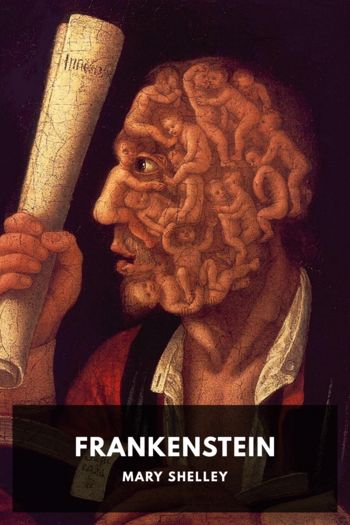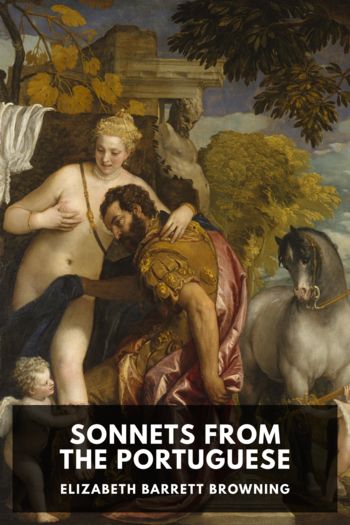Two-Way Mirror Fiona Sampson (best romance ebooks .txt) 📖

- Author: Fiona Sampson
Book online «Two-Way Mirror Fiona Sampson (best romance ebooks .txt) 📖». Author Fiona Sampson
It’s almost as if she’s been smuggled into the world. Her private christening is conducted by a good friend who just happens to be visiting the new parents that week. William Lewis Rham, a Cambridge friend of Edward’s, is on his way to becoming a leading agriculturalist; he’s also the rector of a parish far out of sight and mind in Wiltshire. He’s doubtless delighted to inspect the agricultural potential of the estate his friend has recently rented, Coxhoe Hall in County Durham. But it must be odd and embarrassing for the young, unmarried priest to coincide with, if not an actual birth, then the lying-in that followed it. On the other hand, with his relatively little experience of infants, Rham would be the perfect choice for officiant if one had anything questionable to cover up: such as, say, a baby who appears less a newborn than three or four months old. Which raises the question: could the consistently precocious Ba in fact have been born a little earlier than her recorded birth date, so perilously soon after her parents’ hasty marriage, and so close, at less than sixteen months, to Bro’s arrival?
Whatever the case, for all his wealth, by July 1810 Ba’s twenty-five-year-old Papa has plenty of reasons to feel insecure. A broken home, immigration, anxieties about ethnicity and class, compromised wealth, early marriage and possibly accidental fatherhood, manipulation by an absent father, his father’s brother and his father-in-law: with so little to rely on, the psyche needs compensatory structures. Small wonder he’s throwing so much money and energy into creating his ideal home.
Hope End house, finished the year he turns thirty-two, is a young man’s indulgence. The Barrett circle are more interested in extracting merchandise and money from Jamaica than in the kind of magpie cultural orientalism that Queen Victoria’s imperial reign will soon popularise, yet this great statement is built in the very newest, orientalist style. With its minarets, ogee drop-shaped windows and second-floor roundels, it has more than a little in common with the fashionable Picturesque, that newest cultural trend for strikingly ornamented, even whimsical forms of planting and building, for which Herefordshire friends and neighbours will turn out to be the intellectual powerhouse. Edward Barrett Moulton-Barrett doesn’t employ an architect, simply turning to landscape architect J. C. Loudon, who is redesigning the grounds, for occasional advice. The result is a fabulously expensive piece of outsider art.
The house being built in 1810 below Ba’s parkland viewpoint looks like the folly it is – yet it has a disconcerting, Gaudi-like sense of fluidity. The building pushes and pulls old Palladian proportions to create a flowing modernist structure that’s a whole century ahead of its time. But, as it amplifies the original gesture of relegating the old, Georgian mansion that so resembled Cinnamon Hill to a stable block, some deeply personal, Freudian logic seems to be trumping economic and aesthetic sense.
Perhaps unsurprisingly, in 1873 a subsequent owner will pull everything down and start again. But for the space of Ba’s childhood the house that Papa built represents everything that’s prodigious, expansive and progressive – and everything defensive and compromised – about the Barretts. Risk-taking, pioneering, fundamentally domestic and not a little vulgar, Hope End may be a monument to invention as survival strategy – and the precursor to the adult Ba’s own sui generis creativity.
[
Opening Frame
]
That great twentieth-century Italian, the novelist Italo Calvino, says that:
Both in art and in literature, the function of the frame is fundamental. It is the frame that marks the boundary between the picture and what is outside. It allows the picture to exist, isolating it from the rest; but at the same time, it recalls – and somehow stands for – everything that remains out of the picture.
Calvino is a hugely sensual, visual writer, an artist of the coloured world. So perhaps it’s not surprising that he pictures storytelling this way. But this is much more than a nice literary metaphor; it’s an idea about how stories work. As Calvino points out, a frame isolates, identifies, and so shows up what it contains. It especially highlights what’s hard to see. In his own most famous novel, 1979’s If On a Winter’s Night a Traveller, a framing structure challenges us to think about both what’s true, and how we can know that it is.
Calvino’s frame is his book’s ‘outer’ narrative about ‘you’ the reader. This kind of literary device is nothing new, though most introduce characters who then narrate the work’s ‘inner’ stories. The world’s oldest literary text, Gilgamesh, a survivor from the second millennium BCE, starts by imagining the discovery of (in turn more) ancient tablets recording the story it goes on to tell. In the middle ages, the Scheherazade stories collected in the Islamic Golden Age as One Thousand and One Nights, and Giovanni Boccaccio’s fourteenth-century The Decameron, offer us parables about storytelling as survival. Scheherazade needs to enchant her husband the Sultan so that he won’t execute her; the ten young people who narrate the Decameron are self-isolating from plague.
We know from her 1842 essay, ‘The Book of the Poets’, how highly Elizabeth Barrett Browning values Geoffrey Chaucer’s framed compendium of The Canterbury Tales: ‘And he sent us a train of pilgrims, each with a distinct individuality apart from the pilgrimage, all the way from Southwark and the Tabard Inn, to Canterbury and Beckett’s shrine: and their laughter never comes to an end, and their talk goes on with the stars.’ Two of the English canon’s most famous frame novels, Mary Shelley’s three-ply Frankenstein – in which Walton the Arctic explorer frames Frankenstein’s own storytelling, which frames his creature’s – and Emily Brontë’s Wuthering Heights, narrated by the housekeeper, are written by women who are Elizabeth’s contemporaries; of those published in the century before her birth, Laurence Sterne’s Tristram Shandy could be described as all frame.
So it’s not surprising that when she comes to write the full-length fiction that is





Comments (0)